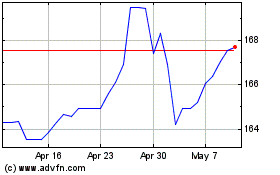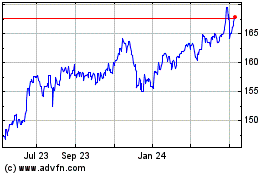Euro Mixed Following Eurozone PMI
April 01 2015 - 5:25AM
RTTF2
The euro showed mixed trading against the other major currencies
in the early European session on Wednesday, following the release
of Eurozone PMI for March.
Data from Markit Economics showed that Eurozone manufacturing
sector expanded more than initially estimated as growth accelerated
in Germany, Spain, Italy and the Netherlands. The Purchasing
Mangers' Index rose to a 10-month high of 52.2 in March from 51 in
February. The flash score was 51.9.
German manufacturing growth in March was faster than estimated
earlier, marking the strongest improvement in eleven months.
Markit/BME Germany Manufacturing Purchasing Managers' Index climbed
to 52.8 from 51.1 in February. The flash reading for the index was
52.4, released on March 24.
Italy's manufacturing sector expanded at the fastest pace in 11
months in March. The Markit/ADACI Purchasing Mangers' Index rose to
53.3 in March from 51.9 in February. This was the highest score
since April 2014. It was forecast to rise to 52.1.
In the Asian trading, the euro held steady against the other
major currencies.
In the early European trading, the euro rose to 0.7266 against
the pound, from an early low of 0.7229. If the euro extends its
uptrend, it is likely to find resistance around the 0.74 area.
Data from Markit Economics and the Chartered Institute of
Procurement & Supply showed that British manufacturing sector
expanded at the fastest pace in eight months during March on
stronger growth in production and new orders that led to increased
hiring. The Markit/CIPS Purchasing Managers' Index rose to 54.4
from 54 in February, which was revised down from 54.1. The latest
reading was in line with economists' expectations. Pulling away
from an early high of 1.0791 against the U.S. dollar, the euro
dropped to session's low of 1.0719. On the downside, 1.04 is seen
as the next support level for the euro.
The euro fell to 1.0429 against the Swiss franc, from an early
low of 1.0457. The euro may test support near the 1.01 region.
Data from the Credit Suisse showed that Switzerland's
manufacturing sector contracted for the third consecutive month in
March. Although the procure.ch Purchasing Managers' Index rose to
47.9 in March from 47.3 in February, the score was below 50
indicating contraction in the sector. The reading was expected to
rise to 47.5.
Against the yen, the euro slipped to 128.75 around 3:45 am ET,
from an early high of 129.44. Thereafter, the euro held steady
against the yen.
Data from Markit Economics showed that Japan's manufacturing
sector slowed in March but continued to expand, with a PMI score of
50.3. That's down from 51.6 in February, although it remains barely
above the boom-or-bust line of 50 that separates expansion from
contraction.
Looking ahead, U.S. ADP private sector employment data, U.S. ISM
manufacturing PMI and Canada RBC manufacturing PMI- all for March
are slated for release in the New York session.
At 9:00 am ET, U.S. Federal Reserve Bank of San Francisco
President John Williams will participate in a panel discussion
titled "Financial Stability: How Essential Financial Stability be
to Central Banks?" at the Federal Reserve Bank of Atlanta's
financial markets conference "Central Banking in the Shadows:
Monetary Policy and Financial Stability Post crisis," in Stone
Mountain.
About an hour and a half later, at the same conference in Stone
Mountain, U.S. Federal Reserve Bank of Atlanta President Dennis
Lockhart will participate in a panel discussion titled "Monetary
Policy: Will the Traditional Banking Channel Remain Central to
Monetary Policy?".
Euro vs Yen (FX:EURJPY)
Forex Chart
From Mar 2024 to Apr 2024

Euro vs Yen (FX:EURJPY)
Forex Chart
From Apr 2023 to Apr 2024
